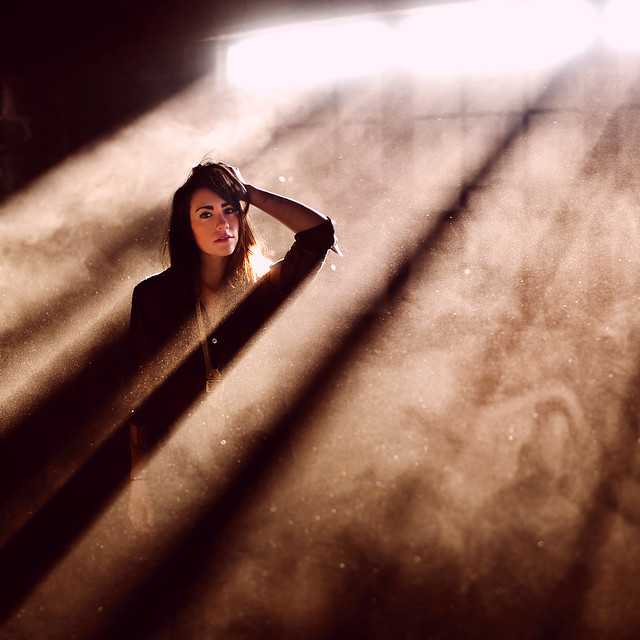Having derived from the Greek word Phot-Light & graphos-drawing, light drawing should it be called for the significance of radiance in the art of photography. A great amount of practice and a sense of recognizing would make us record the ambiance of light much exclusively producing superior photographs. Light is one of the grand factors which would straight away make a photograph stand out from rest of the lot, it doesn’t need an explanation even for a layman to understand the beauty of light.
How frequently do we try to incorporate light in terms of photography, the harsh reality is we don’t see light while shooting. To appreciate and to celebrate the qualities of a good light, a vision need to be learnt. Be it Wildlife Photographers or the Street Photographers, we look for subjects, emotions and moments. Light doesnt seem to enter into this category for making a perfect picture.
But if you are mature enough, you would have already understood light can easily spoil a great moment, whereas the same light can beautify a blunt picture 100 times more for what it really is. Yes, Light is the God of Photography.
Here in this short tutorial, I have highlighted some of the key points and physical properties to recognize the ambient light & two important criteria to capture them with your lambent creativity.
All photos are linked and lead to the sources from which they were taken. Please feel free to explore further works of these photographers on their collections or their personal sites.

Photo Credit : Eric Volto / 500px
Ambient Light
The Available light source, before moving much into the varieties of Ambient light, it becomes necessary to give a general introduction on how the brilliant use of ambient(available) light can enhance your photography. Here the brightness or the direction of light is almost impossible to adjust and it becomes the role of the photographer to adjust himself according to the orientation of lighting. Most often, Photographers find it difficult to shoot with the available light, they wish to shoot against the light and to achieve this using reflectors or shades whenever necessary.
For studio setups, ambient light is often considered relative to the additional fill light, hence ambiance light is assumed to behave like a key light. To enhance your chances of producing good results, it is advisable to calculate the lighting ratio, which is the relative intensity of available light and the fill light in determining the contrast of your final image.

Photo Credit : Joel Santos / 500px

Photo Credit : Cameron Bushong / Flickr
Point Light
It should be a rare occurrence when ambient light can produce point light sources. Tight sealed rooms with light windows could produce magnificent point lights to create a stirring drama in the concept of photograph. Moving away from natural light, vehicle lights are beautiful example of point light, it produces interesting circumstances adding more surprises in a photograph when shot against a right subject.

Photo Credit : Stephen Emerson / 500px
Diffused Light
A Cloudy day is the right example for diffused light. Any light which is very soft and is not a direct source from the light source is a diffused one. To explain better, clouds acts as a soft box in diffusing the original light source. Diffused light is fantastic for any kind of photography, no harsh shadows nor deep contrasts, makes this an ideal lighting display for travel and street photography.

Photo Credit : Giuliano Mangani / 500px

Photo Credit : Atomic Zen / 500px
Back Lit and Rim Light
Shooting against the light source, can produce excellent results. To add to the brilliance, this lighting is one of its kind creating more depth and a variety in the perspective for the photographer. Also in studio setups, this can produce pleasing results where the light source is right behind the subject, making the rim of he/she glow.

Photo Credit : Nigel Pye / 500px

Photo Credit : Alexander Awerin / 500px
Colors of Light
No matter what the source or nature of light is, it does continue to impress and surprise us a variety of physical attributes. The color of light is an interesting attribute to the nature of a photograph. For example, shooting in the golden hour of the day can produce vivid orange yellowish photographs.

Photo Credit : Jenny Woodward / 500px

Photo Credit : Lars van de Goor / 500px
Positioning
Be it you are shooting a busy street or a tiger in a remote African jungle, positioning yourself towards the merit of light can create infinite possibilities together in creating a stunning photograph. Aligning yourself to the plane of a light scene, can drastically change the nature of a photograph. Visualize the right light and position yourself to capture the true essence of it.

Photo Credit : Heri Wijaya / 500px

Photo Credit : Robert Bagnino / 500px
Exposure
Choosing the right exposure, meaning the ample amount of light to enter your camera sensor is the prime part in capturing a photograph. Remember while back light and rim light can be contrasted by under exposing the shot, the same technique can ruin your picture for a diffused light. Hence choose the exposure carefully, professionals and cinematographers often use light meters to evaluate the scene exposure.

Photo Credit : Philippe Sainte-Laudy / 500px

Photo Credit : Martin Rak / 500px
Don’t miss to check our previous Photography Tutorials:
- 5 Things To Do On A Street For Every Street Photographer
- Street Photography Tips And Techniques By Thomas Leuthard
- The Importance Of Lines In Photography – An Overview With Superb Examples
- Street Photography Tips, Techniques And Inspirations
- Wide Angle Photography – An Introduction With Stunning Examples
- Essentials For Post Processing In Photography






1 comment
Awesome article! Thank you for tips and beautiful examples!
Can’t wait evening to go out and take a few shots 🙂